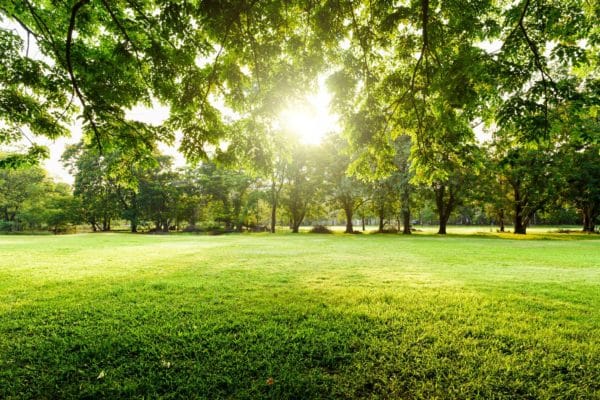
Air conditioning is so integral to modern life that many of us take it for granted and could not imagine living without it. In many areas of the country, people’s schedules during the summer months are very different than what they were before air conditioners became commonplace.
The unfortunate truth is that some of the comforts and conveniences that shape modern life are contributing to climate change and thus not sustainable in their current forms. Among them is air conditioning, which contributes to air pollution directly but also indirectly both in the manufacturing process and during its lifespan. With that in mind, let’s consider how air conditioning causes air pollution and what we can do about it.
Air Conditioners Releases CFCs and HFCs
All air conditioners use some form of refrigerant, and refrigerants contain chlorocarbons and hydrofluorocarbons, which are abbreviated CFCs and HFCs, respectively. Refrigerant does not have to contain CFCs and HFCs. In fact, the earliest refrigerants used in the U.S. contained chemicals like ammonia and methyl chloride instead, but those are toxic to humans. During the 1920s and 1930s, all refrigerants were switched to using CFCs and HFCs, and it seemed like a great choice at the time. These chemical compounds are nontoxic and have a very high resistance to heat, which is necessary for the application.
Unfortunately, CFCs and HFCs are released into the atmosphere and are among the leading causes of the ozone layer’s deterioration. In 1987, many countries signed the Montreal Protocol, which is an agreement to phase out CFCs and other compounds that affect the ozone layer. For a long time, the industry downplayed the role of air conditioners. They are not the only source of CFCs and HFCs after all. But we now know that the role is significant. We also know that the release of these gases from air conditioners has been on the rise the last two decades not just in the U.S. but around the world. The U.S. did outlaw Freon, which can no longer be manufactured in the U.S. since January 1, 2020, but the other refrigerants still in use are not CFC or HFC free.
Air Conditioning Uses Significant Energy
Air conditioners and heat pumps, which are essentially air conditioners that can transfer heat energy inside as well as outside, require a significant amount of energy. While the technology has become a lot more energy efficient over the years, it still requires a lot of energy to transfer heat energy from inside your home to the outside. The problem with this from the perspective of environmental impact is that the vast majority of electricity in the U.S is still generated by burning coal, and burning coal creates significant air pollution: particulates, nitrogen oxides, sulfur dioxide, mercury, lead and so forth.
The International Energy Agency estimates that there are 1.6 billion air conditioners in use across the globe and that the number will rise to 5.6 billion by 2030. A recent U.N. study came to the conclusion that approximately 25% of all global warming will be caused by air conditioning by 2050. The average air conditioner consumes 3,000 to 5,000 watts of electricity every hour that it is in use. This is a significant amount that creates a lot of air pollution, and this will not change until we either make air conditioners much more energy-efficient than they are now or acquire most of our electricity through renewable sources.
The Materials Used Contribute to Air Pollution
When air conditioners were first made, they were manufactured almost entirely of metal. There are certainly environmental impacts associated with manufacturing steel, but it is better than the alternatives, such as plastic. Many air conditioner manufacturers have switched to using as much plastic as possible, and they do this because plastic is cheaper and lighter. However, manufacturing plastic creates significantly more air pollution than manufacturing steel, aluminum and copper. Metal is also superior because it is easily recycled. Plastic is not. In fact, 50% of all plastic is only used once, and that number is closer to 100% if you focus exclusively on air conditioners. Plastic is not biodegradable. It requires significant landfill space, and that exacerbates the problems with landfills being one of the leading causes of air pollution.
How to Limit the Air Pollution Your AC Creates
If everybody made their air conditioner usage more energy efficient even by a little, it would make a real difference when it comes to air pollution and global warming. If you have an air conditioning system that uses Freon, you should consider proactively upgrading to a new model. The new models still release CFCs but not as much. When choosing your new AC, choose the most energy-efficient model that you can afford. Ensure that the model you choose is Energy Star certified, and the higher the SEER rating, the better. You may even be able to take advantage of a federal tax credit if the SEER rating is high enough.
Make sure your home is well-insulated as this is the leading cause of energy loss when it comes to air conditioners. The EPA recommends investing in a smart thermostat. Determine your ideal temperature for while you are home and awake. Use the programming to increase that temperature by 4 degrees Fahrenheit during your sleeping hours and 7 degrees during your school and work hours. Finally, schedule a seasonal tune-up every year in spring. That will extend the life of your equipment and cause it to run at peak efficiency and thus use less energy.
Air Conditioning Can Cause Poor IAQ as Well
Air conditioning does not directly lead to poor indoor air quality because air conditioners do not release carbon dioxide and CFCs and the like are nontoxic. Air conditioners do get dirty over time and can negatively affect IAQ that way. It is important to control dust in the home, have your unit cleaned once a year, and have your ductwork cleaned every several years or so. Make sure to replace your air filters as needed and at least every three months. Be mindful that how often you’ll need to replace your filters and clean your ducts depends on the size of your household and whether you have pets. You may also want to consider installing a whole-home purification system in addition to a whole-home dehumidifier and humidifier.
Your Local Indoor Air Quality Pros in Northeast Florida
McGowan's Heating & Air Conditioning is a heating and cooling company that has locations in Jacksonville and Bunnell and has been proud to serve this region for almost 50 years. Our company performs new installations, replacements, conversions, maintenance, and repairs for all manner of heating and cooling technologies used for residential and commercial purposes. We can keep your air conditioner in tip-top shape and your ductwork clean. You can also count on us for a full range of indoor air quality services, including air filters and UV lights. Call us today or contact us online if you have any questions about our services and products or would like to schedule a service appointment or consultation.



